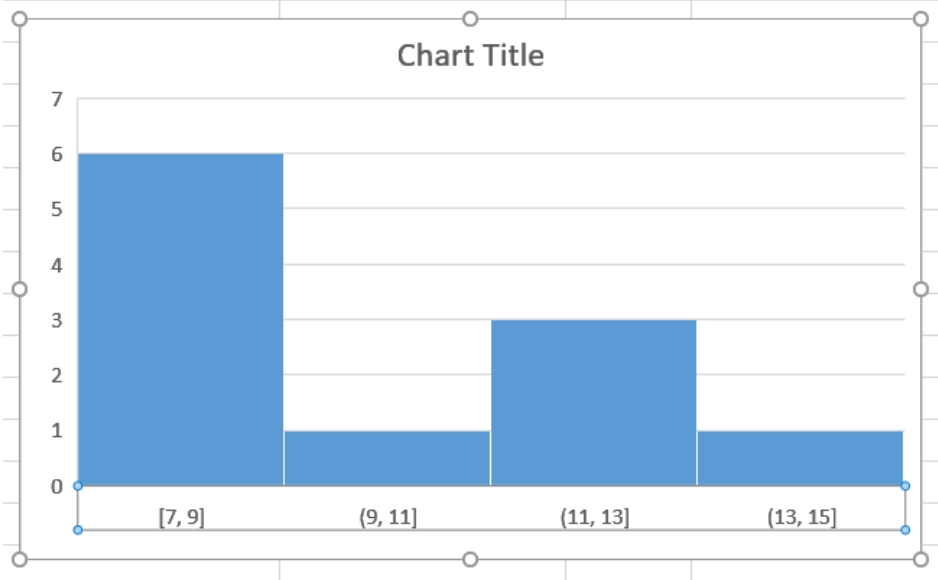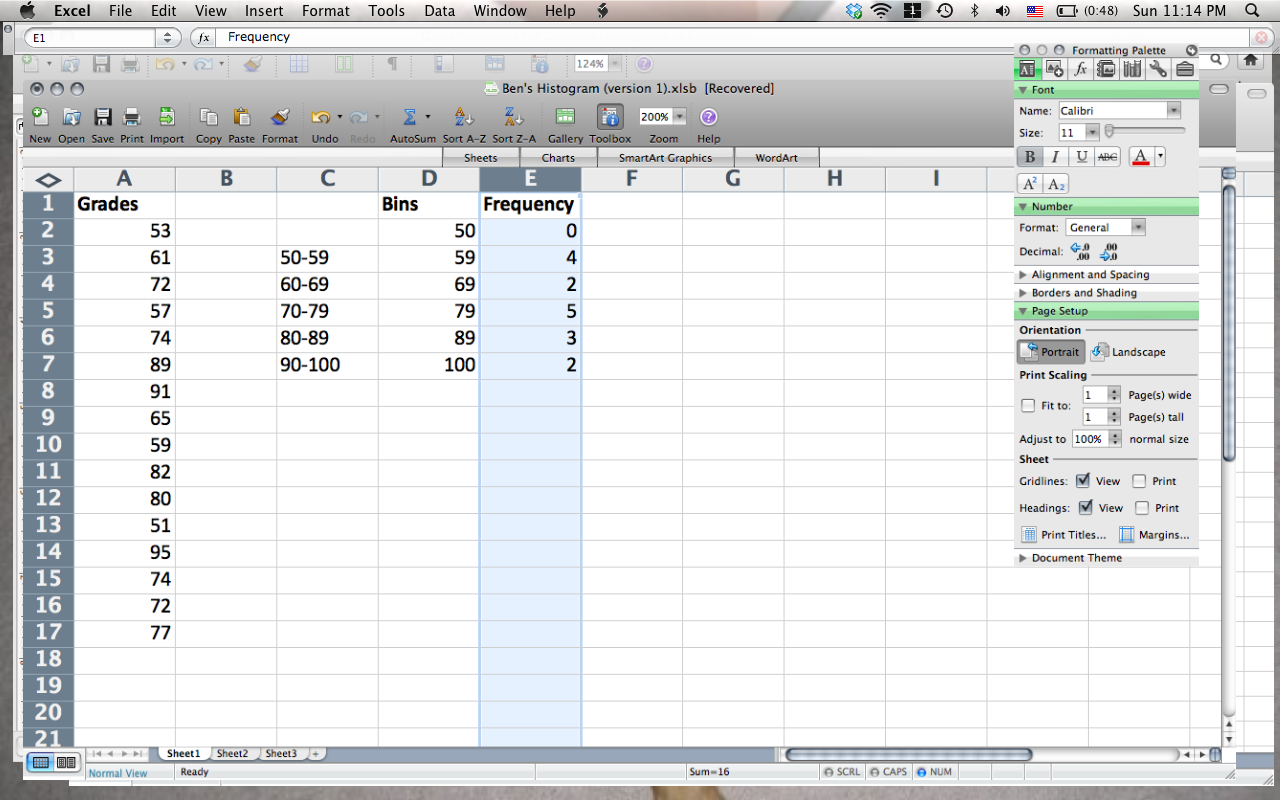
#HISTOGRAM USING EXCEL FOR MAC HOW TO#
Let’s see how to make a Histogram in Excel.

You can easily create a histogram and see how many students scored less than 35, how many were between 35-50, how many between 50-60 and so on.
#HISTOGRAM USING EXCEL FOR MAC SERIES#
The histogram condenses a data series into an easily interpreted visual by taking many data points and grouping them into logical ranges or bins.Ī simple example of a histogram is the distribution of marks scored in a subject. It’s a column chart that shows the frequency of the occurrence of a variable in the specified range.Īccording to Investopedia, a Histogram is a graphical representation, similar to a bar chart in structure, that organizes a group of data points into user-specified ranges. Microsoft assures us they are working on a better formula editing experience, and we can’t wait.Watch Video – 3 Ways to Create a Histogram Chart in ExcelĪ histogram is a common data analysis tool in the business world. It’s easiest to just copy and paste the formula that you worked on in the Excel formula bar above: you can make the Name dialog larger, but you can’t make the Refers To box more than one row of text tall. When the New Name dialog pops up, enter the name of the custom function in the Name textbox, and enter the formula (not including the arguments in parentheses at the end) in the Refers To textbox. On the Formulas tab of the ribbon, click Define Name. This is done using Excel’s Defined Name infrastructure. Since the LAMBDA works out in this test, I’m ready to convert it into a custom function.

The result of the LAMBDA formula is identical to that of the LET formula in the previous section, and the resulting chart is also identical. This approach helps to debug the LAMBDA formula. By using CHOOSE(, weights, COUNTIF(rng,weights),ĬOUNT(rng)* NORM.DIST(weights,avg,STDEV(rng),FALSE) ) ) (B2:B288) I determine my list of weights, then do my COUNTIF and NORM.DIST as in the individual Dynamic Arrays in D6:F6. Based on delta I compute my new minimum and maximum values, newmin and newmax. I compute delta, the larger of the spans between the max or the min and the mean. I define the input range of weights, rng, and the calculated minimum and maximum values, datamin and datamax.

I’m continuing with whole number data from here on, but these principles could be applied to either case.

With LET, I can define inputs and intermediate calculations, and use them in downstream calculations. If the Dynamic Arrays are becoming easy for you, we can take it further, using the new LET function.


 0 kommentar(er)
0 kommentar(er)
